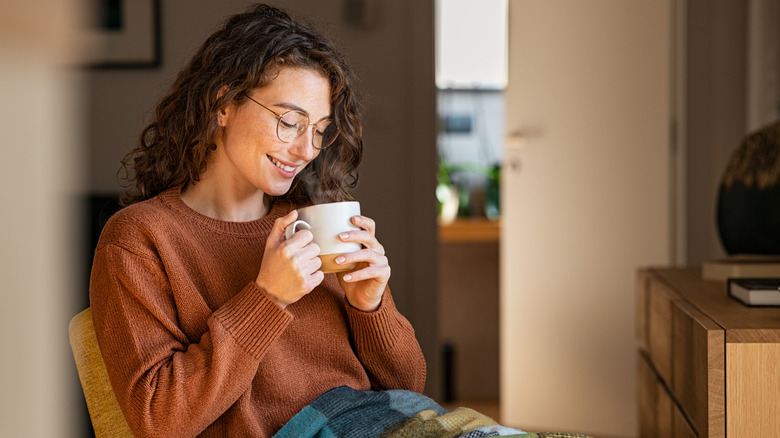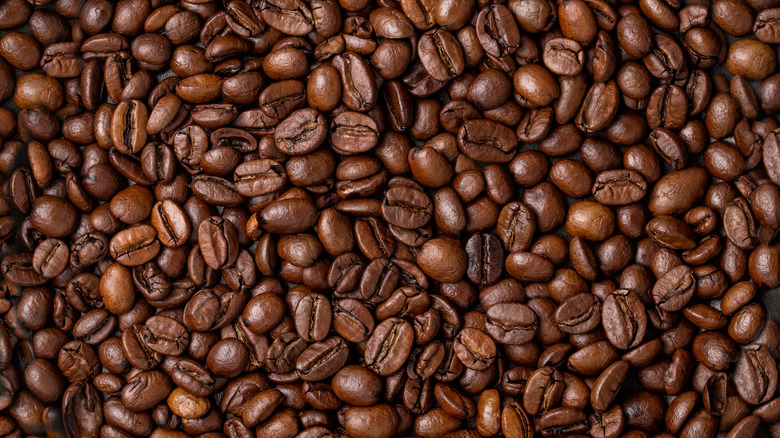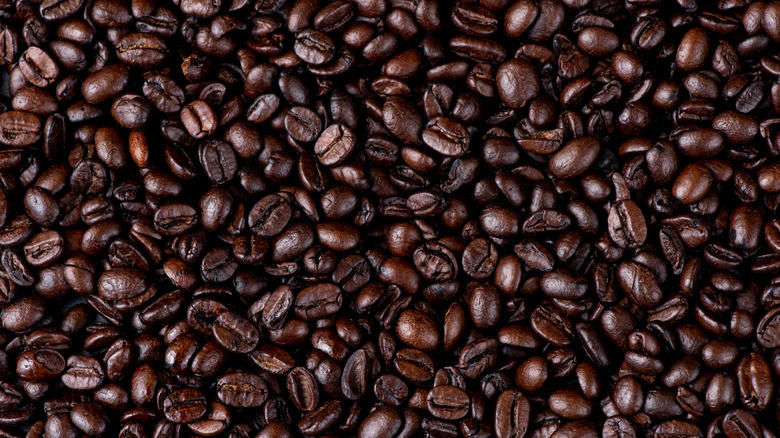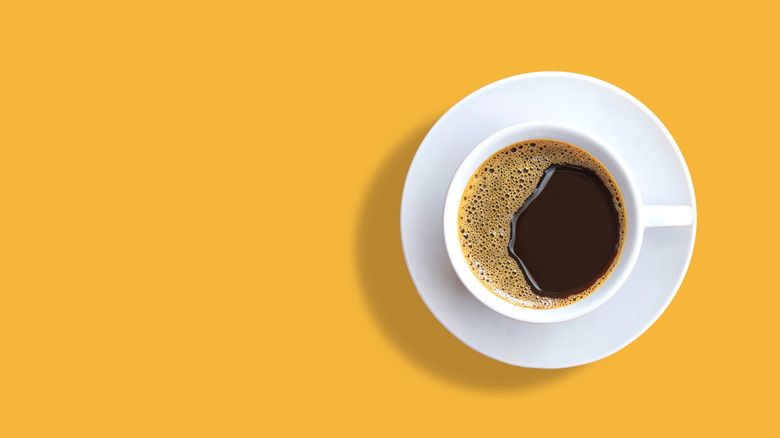What Makes Dark Roast Coffee Taste Different From Light Roast Coffee
Medium drip — two creams, one sugar.
Maybe you're a coffee drinker who knows what you like. Most folks in line at the neighborhood café have a go-to order memorized and stick to it with zeal. But maybe you don't know as much about your own java preferences as you think. House drip isn't the only option many cafes offer. Don't be surprised when the barista turns to the pot behind the counter and asks if you want light or dark roast. Will you know how to answer?
Dark and light roast coffee have distinctly different tastes – which makes sense considering their flavor profile fundamentally changes during roasting, via the Barista Institute.
Raw coffee beans start out green and smell like grass, via Seattle's Real Good Coffee Co. They resemble buds on trees more closely than the richly brown, aromatic coffee beans we savor. Coffee beans are typically roasted in large rotating drums. And according to the National Coffee Association, the beans begin to absorb heat, lose moisture, and darken during the roasting process.
So, if both roasts come from a common bean origin, what makes dark and light roast coffee taste so different? And how should you know what to tell that poor barista next time you walk into your local coffee shop – instead of "uh, isn't it all the same?"
Light roast
Light roast coffees have a bright, acidic, floral, fruity, and often herbal taste.
According to Copper Moon Coffee, as beans roast, both the caffeine content and the origin flavors roast out. In order to achieve a light roast, the beans are held over heat until a single crack (called the "first crack") is heard, usually around the time the beans reach 350 degrees Fahrenheit. Beans destined for light roast coffee are roasted between 350-415 degrees, via Copper Moon.
Contrary to popular belief, light roasts have a higher caffeine content than dark roasts — even though dark roasts are bold and robust in flavor. This has everything to do with the roast and nothing to do with the caffeine level. However, this difference is only marginal. Ontario roaster Detour Coffee reports that the average 8-ounce cup of drip coffee contains 95-200mg of caffeine and that the roasting time does not make a large enough difference in caffeine level to be notable. Cold brew, it says, often has more caffeine than drip coffee due to the higher concentration of beans-to-water and the longer brewing times, but the roasting process deals with heat, not concentration.
Dark roast
Think diner coffee.
The professionals at Copper Moon Coffee clock a dark roast as any beans roasted to a temperature higher than 440 degrees Fahrenheit –- which conveniently comes after a second audible "crack." It's important to remove the beans from heat immediately after this crack; if beans roast much hotter than 465 degrees, the coffee will start to burn.
Are dark roasts actually stronger? It depends on how you define "strength." If stronger coffee refers to caffeine content, then light roasts are the "stronger" coffee. Since they're roasted for a longer amount of time, darker roasts are slightly less acidic than lighter roasts and also have less caffeine. According to Real Good Coffee Co., in terms of flavor, medium-dark roasts have a much richer, bolder profile. This robustness makes dark roasts the first choice for crafting espresso beverages.
Many coffee fans (and casual sippers) describe dark roasts as bitter, which gives them a bad rap. Even though the flavor notes in light roasts are inherently brighter, the unpleasant bitterness some folks associate with dark roasts can be caused by user error; it's not the coffee's fault. Healthline details that over-roasting burns the beans, brewing for too long over-exposed the beans to hot steeping water, and improper grind size affect the overall steep and concentration of the coffee.
The difference
The taste difference all comes down to the roast. During the roasting process, some of the natural, initial flavors of the origin bean are lost or altered. This is why light roasts are brighter and fruitier on the palette; they retain most of the flavor notes present in the origin bean, via Driftaway Coffee. The result is a dark roast with deep but simple flavors and a light roast with more delicate but complex flavors, according to Healthline.
Whereas light roast coffees get their taste from the raw bean itself, dark roast coffee gets its trademark bold, smoky, and nutty dark roast flavor from oil on the surface of the bean, which comes out during roasting, according to Driftaway Coffee. That's also why dark roast coffee makes for a thicker mouthful than light roast. These prominent oils thicken the overall viscosity of a brewed cup.
So, with this in mind, next time you walk into the coffee shop down the street, you'll be able to say medium roast without blinking. Best of both worlds, right?



